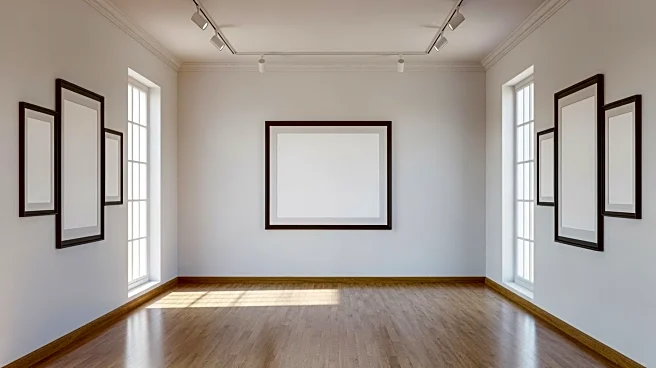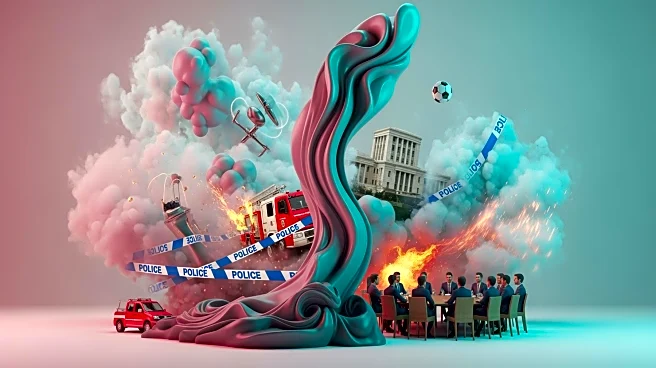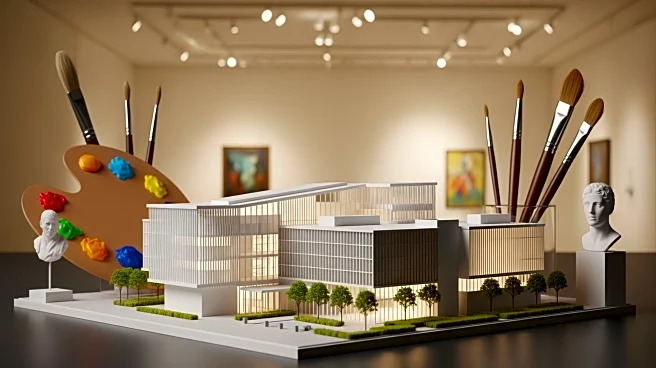What's Happening?
The Brooklyn Public Library (BPL) has introduced an innovative art lending program as part of its new exhibition, 'Letters for the Future.' This initiative, developed in collaboration with the artist-organized
group Department of Transformation, allows patrons to borrow contemporary artworks, including prints by Kameelah Janan Rasheed and spell jars by the artist duo Hilma’s Ghost. The exhibition features works by 35 artists and aims to explore text and image relationships, distribution, and participation. The program revives a BPL initiative from the 1950s and 1960s, offering 20 artworks for borrowing, ranging from magnets to original works on paper. The BPL's initiative is part of a broader trend among educational institutions to provide art lending services, with similar programs existing at institutions like the Massachusetts Institute of Technology and the University of Chicago.
Why It's Important?
This program underscores the BPL's commitment to making cultural programs accessible and free of charge, countering the trend of privatizing public spaces. By allowing the public to borrow art, the library fosters community engagement and supports social learning. The initiative also highlights the role of libraries as cultural hubs, providing access to high-quality art and encouraging public participation in the arts. This approach not only democratizes access to art but also supports artists by showcasing their work to a broader audience. The program's success could inspire other libraries and cultural institutions to adopt similar models, promoting cultural inclusivity and education.
What's Next?
The BPL plans to expand the art lending program based on feedback from participants. This expansion could involve increasing the number of artworks available for borrowing and incorporating additional community-focused programs. The library aims to deepen its role as a site of social learning and community building, potentially influencing other libraries to adopt similar initiatives. The success of this program could lead to a broader acceptance and implementation of art lending services across the country, enhancing public access to art and cultural education.











